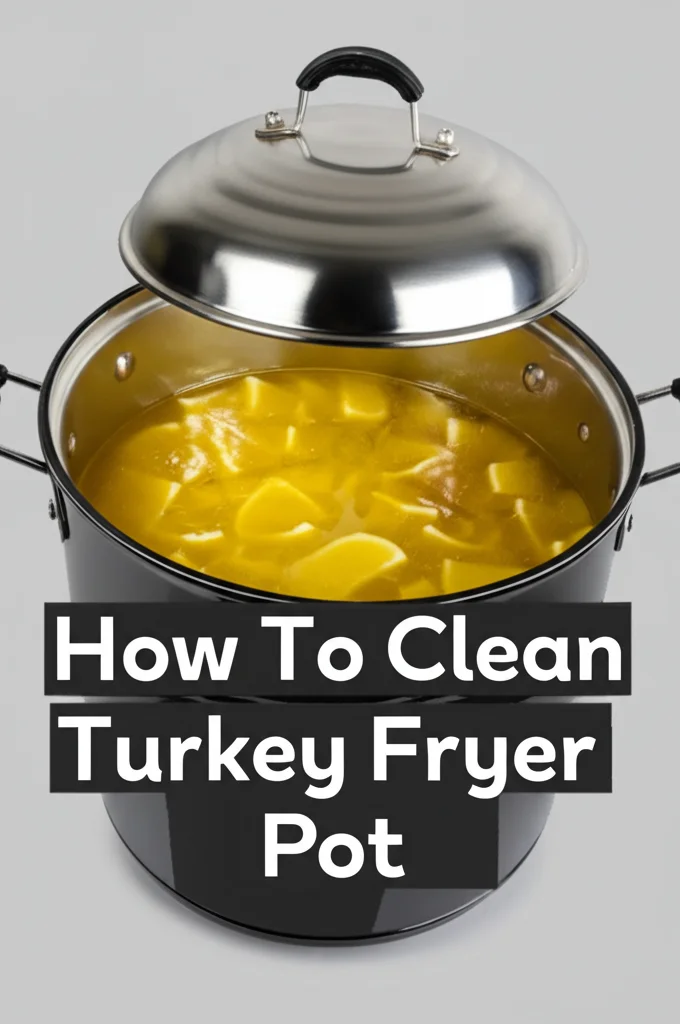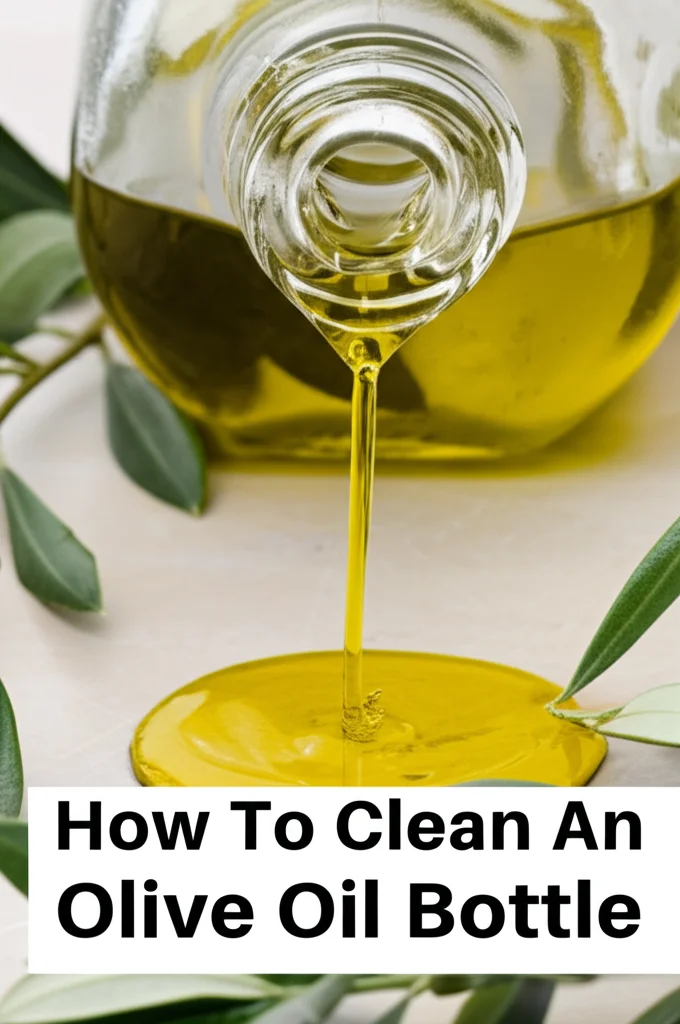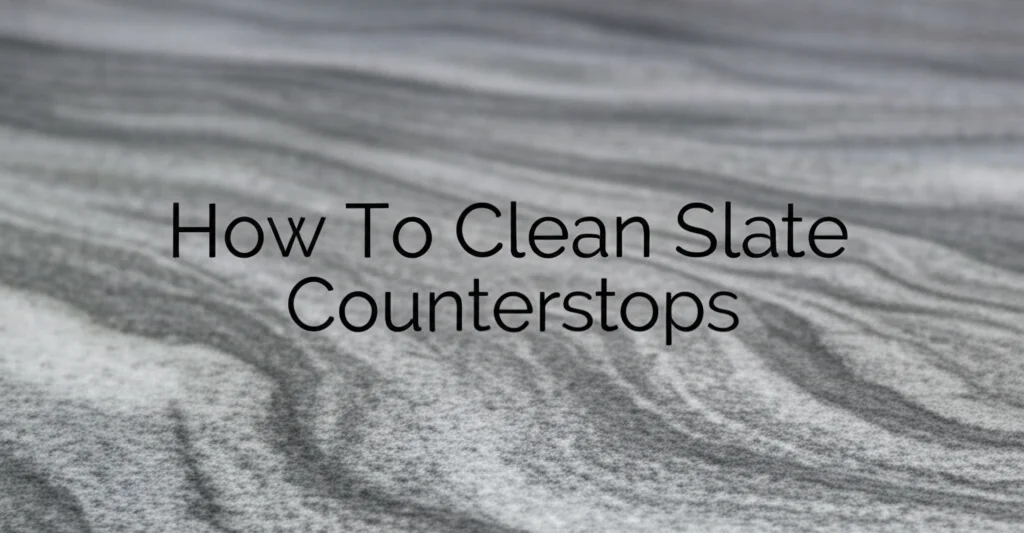· Kitchen Cleaning · 5 min read
How To Clean Turkey Fryer Pot

Cleaning Your Turkey Fryer Pot: A Step-by-Step Guide
Ever wonder how to tackle the greasy mess left behind after a delicious turkey fry? Cleaning a turkey fryer pot can seem daunting, but it doesn’t have to be. This guide will walk you through the entire process, ensuring your pot is sparkling clean and ready for its next use. We’ll cover everything from safely cooling the oil to the best cleaning methods for removing stubborn residue. Let’s get started and make cleaning your turkey fryer pot a breeze!
Quick Answer: After the oil is completely cool, carefully remove it and dispose of it properly. Then, wash the pot with hot, soapy water, using a scraper to remove any stuck-on bits. Rinse thoroughly and dry completely before storing.
Takeaway:
- Always let the oil cool completely before handling.
- Proper oil disposal is crucial for environmental safety.
- A good scrub with hot, soapy water is usually all you need.
Why Cleaning Your Turkey Fryer Pot Matters
Keeping your turkey fryer pot clean isn’t just about aesthetics; it’s about safety and longevity. Leftover oil and food particles can become rancid, creating unpleasant odors and potentially attracting pests. More importantly, built-up residue can affect the flavor of future fried foods. A clean pot ensures a safe and tasty frying experience every time. Regular cleaning also prevents corrosion and extends the life of your fryer pot, protecting your investment.
Safely Cooling and Handling Used Frying Oil
The first, and most important, step is safely dealing with the used oil. Hot oil is dangerous and can cause severe burns. Never attempt to move or clean the pot while the oil is still warm. Allow the oil to cool completely – this can take several hours, even overnight. Once cool, carefully pour the oil into a sturdy, sealable container. Old milk jugs or large plastic containers work well.
Important Oil Disposal Tips:
- Never pour oil down the drain! This can clog your pipes and harm the environment.
- Check with your local waste management services for oil recycling options.
- If recycling isn’t available, dispose of the sealed container with your regular trash.
- Consider lining the pot with a disposable aluminum liner next time to simplify cleanup.
The Initial Wash: Removing Loose Debris
Once the oil is removed, begin with an initial wash to remove any loose food particles or residue. Fill the pot with hot water and add a generous amount of dish soap. Let it soak for about 15-20 minutes to loosen any stuck-on bits. After soaking, use a soft sponge or cloth to scrub the interior of the pot. Avoid abrasive scrubbers, as they can damage the surface. For stubborn residue, a plastic scraper can be helpful.
If you’re looking for ways to keep your floors clean while you’re in the kitchen, check out this article on https://www.beacleaner.com/how-to-clean-kitchen-floor-without-mop/.
Tackling Stubborn Residue: Deep Cleaning Methods
Sometimes, a simple wash isn’t enough. For heavily soiled pots, you’ll need to employ a deeper cleaning method. Here are a few effective options:
- Baking Soda Paste: Mix baking soda with a small amount of water to create a paste. Apply the paste to the stubborn areas and let it sit for 30 minutes before scrubbing. Baking soda is a gentle abrasive that helps lift residue without damaging the pot.
- Vinegar Solution: Fill the pot with a solution of equal parts water and white vinegar. Bring the mixture to a boil, then let it simmer for 15-20 minutes. The vinegar helps dissolve grease and loosen residue.
- Commercial Degreaser: For extremely stubborn residue, consider using a commercial degreaser specifically designed for kitchen use. Follow the manufacturer’s instructions carefully.
Remember to always wear gloves when using cleaning solutions.
Cleaning the Fryer Basket and Accessories
Don’t forget to clean the fryer basket and any other accessories! These often accumulate just as much grease and residue as the pot itself. Wash the basket and accessories with hot, soapy water, using a brush to scrub away any stuck-on food. For the basket, a toothbrush can be particularly useful for cleaning hard-to-reach areas. Ensure all accessories are thoroughly rinsed and dried before storing.
If you’re dealing with tough stains elsewhere in your home, you might find this article on https://www.beacleaner.com/how-to-get-grease-out-of-carpet/ helpful.
Drying and Storing Your Turkey Fryer Pot
Proper drying and storage are essential to prevent rust and maintain the pot’s condition. After washing, thoroughly dry the pot with a clean towel. Ensure there is no remaining moisture, especially in seams or crevices. You can also place the pot in a warm oven for a few minutes to ensure complete drying.
Store the pot in a dry, covered location. Avoid storing it outdoors or in a damp environment. If you have the space, consider storing the pot upside down to prevent moisture from accumulating inside.
FAQ: Common Turkey Fryer Pot Cleaning Questions
Q: Can I use steel wool to clean my turkey fryer pot?
A: No, steel wool can scratch and damage the surface of the pot. Opt for a plastic scraper or a soft sponge instead.
Q: What’s the best way to get rid of the smell of old oil?
A: After cleaning, fill the pot with hot water and add a few tablespoons of baking soda. Let it sit for several hours, then rinse thoroughly.
Q: Is it okay to use a dishwasher to clean my turkey fryer pot?
A: It depends on the pot’s material. Check the manufacturer’s instructions. Many stainless steel pots are dishwasher safe, but aluminum pots are not.
Q: How often should I clean my turkey fryer pot?
A: You should clean your turkey fryer pot immediately after each use to prevent residue from hardening and becoming difficult to remove.
Conclusion: Maintaining a Clean and Safe Fryer
Cleaning your turkey fryer pot doesn’t have to be a chore. By following these simple steps, you can keep your pot in excellent condition, ensuring safe and delicious frying experiences for years to come. Remember to prioritize safety when handling hot oil and always dispose of used oil responsibly. A clean turkey fryer pot is a happy turkey fryer pot! Don’t forget to regularly maintain other areas of your kitchen too. For example, you can learn how to clean your kitchen sink with this guide: https://www.beacleaner.com/how-to-clean-stainless-steel-sink-paint-stains/.




